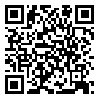BibTeX | RIS | EndNote | Medlars | ProCite | Reference Manager | RefWorks
Send citation to:
URL: http://jdm.tums.ac.ir/article-1-401-en.html
Statement of Problem: Bone material density (BMD) is significantly decreased among postmenopausal women leading to the most common metabolic disease, osteoporosis.Multiple bone fractures are of the most important consequences of this disease, which cost too much for the
society. One of the cheapest and most available methods for the diagnosis of bone density changes is bone radiomorphometric evaluation by conventional methods. Studies have also revealed that mandibular radiomorphometric indices in panoramic radiographs yield invaluable information, which can be used as a screening method to diagnose patients with decreasing bone density, and to determine normal values of
mandibular radiomorphometric indices among normal subjects in different populations.
Purpose: The aim of the present study was to investigate the mandibular radiomorphometric indices in panoramic radiographs among normal female population referring to maxillofacial radiology centers to determine their relationship with age and the total teeth number of the subjects under study.
Material and Methods: In this descriptive-analytic study, two mandibular radiomorphometric indices namely the Antegonial quantitative index (AI) and the Cortical qualitative index (MCI) were evaluated on 417 panoramic radiographs of a female normal population, aged more than 20 years which divided into five age group, by one maxillofacial radiologist as an observer. The relationship between these indices, and also with the number of teeth and age were investigated by variance and Pearson's analysis.
Results: Mean quantitative index (AI) was 3.54±54%mm. The prevalence of MCI index was C2: 71.5%,CI: 20.9%and C3: 7.7%. There was significant correlation between AI/MCI indices with age, dentition and also with each other.(P<0.0001).
Conclusion: Based on the present study, with increasing age the mean AI and the number of teeth decrease significantly. MCI index also shows higher porosity in mandibular cortex (C3 index). Therefore, Mandibular radiomorphometric indices are useful in initial diagnosis and screening of patients with low bone mineral density (osteopenia, osteoporosis).
| Rights and Permissions | |
 |
This work is licensed under a Creative Commons Attribution-NonCommercial 4.0 International License. |




